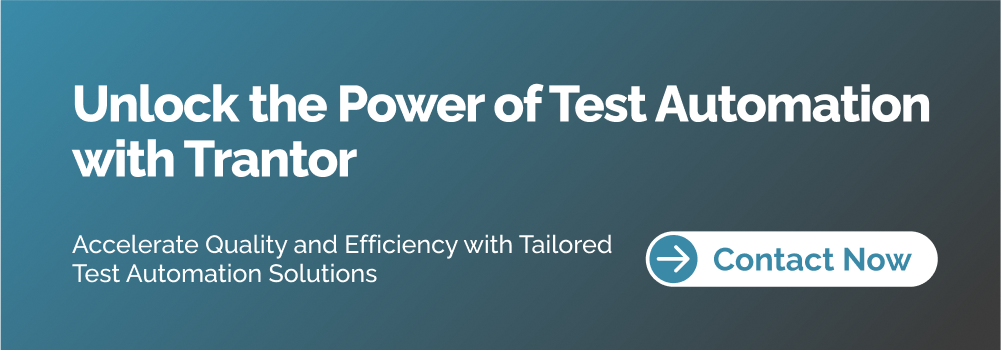Testing, zBlog
Unleashing Quality at Scale: Mastering Test Automation Frameworks

In today’s fast-paced software development landscape, delivering high-quality applications has become a non-negotiable requirement. As software systems grow in complexity and release cycles accelerate, manual testing approaches are no longer sufficient to keep pace with the demands for rapid delivery and comprehensive quality assurance.
Enter test automation frameworks – powerful tools and methodologies that enable organizations to streamline and scale their testing efforts, ensuring thorough coverage, consistency, and efficiency throughout the software development lifecycle. By leveraging test automation frameworks, teams can achieve higher levels of quality, faster time-to-market, and a competitive edge in an increasingly digital world.
In this comprehensive blog, we’ll delve into the world of test automation frameworks, exploring their key components, benefits, and best practices for successful implementation. Whether you’re a seasoned quality assurance professional or just embarking on your test automation journey, this guide will equip you with the knowledge and insights needed to harness the power of automation and drive quality at scale.
Understanding Test Automation Frameworks

A test automation framework is a conceptual structure that provides guidelines, principles, and reusable components for automating software testing activities. It serves as a blueprint for organizing and executing automated tests, ensuring consistency, maintainability, and scalability across various testing efforts.
At its core, a test automation framework typically consists of the following key components:
- Test Script Library: A centralized repository of reusable test scripts, utilities, and functions that can be leveraged across different test scenarios and applications.
- Test Data Management: A structured approach to managing and provisioning test data, ensuring consistent and reliable data sets for testing purposes.
- Test Environment Setup: Mechanisms for configuring and managing test environments, including virtual machines, containers, or cloud-based resources.
- Test Execution Engine: A robust engine or framework capable of executing automated tests, reporting results, and integrating with other tools and systems.
- Reporting and Analytics:Comprehensive reporting and analytics capabilities to analyze test results, identify trends, and generate actionable insights for continuous improvement.
- Continuous Integration and Deployment: Integration with continuous integration and deployment pipelines, enabling automated test execution and feedback loops throughout the development lifecycle.
Benefits of Test Automation Frameworks

Adopting a well-designed test automation framework can yield numerous benefits for organizations, improving quality, efficiency, and overall software delivery processes:
- Increased Test Coverage: Automated tests can be executed repeatedly and consistently, enabling comprehensive coverage of various scenarios, edge cases, and system configurations that may be difficult or time-consuming to test manually.
- Faster Time-to-Market: By automating repetitive and time-consuming testing tasks, teams can significantly reduce the overall testing effort, accelerating the software delivery cycle and enabling faster time-to-market.
- Improved Consistency and Reliability: Automated tests eliminate human errors and inconsistencies inherent in manual testing, ensuring reliable and repeatable test execution across different environments and configurations.
- Early Detection of Defects: Automated tests can be integrated into continuous integration and deployment pipelines, enabling early detection of defects and issues, reducing the cost and effort required for fixing bugs later in the development cycle.
- Scalability and Efficiency: Test automation frameworks provide a scalable and efficient approach to testing, enabling teams to execute tests across multiple environments, platforms, and configurations simultaneously, maximizing resource utilization and throughput.
- Robust Regression Testing: As software applications evolve and new features are added, automated regression testing ensures that existing functionality remains intact, reducing the risk of introducing regressions and maintaining overall system quality.
- Improved Collaboration and Knowledge Sharing: Test automation frameworks promote collaboration and knowledge sharing among team members, as reusable test scripts, utilities, and best practices are centralized and accessible to all stakeholders.
Choosing the Right Test Automation Framework

With a wide array of test automation frameworks available, selecting the appropriate one for your organization can be a daunting task. The choice largely depends on factors such as the programming language(s) used, the application under test (web, mobile, API, etc.), the existing technology stack, and the team’s skill set and expertise.
Popular test automation frameworks include:
- Selenium: A widely adopted open-source framework for automating web browser interactions, supporting multiple programming languages and browser platforms.
- Appium: An open-source test automation framework for mobile applications, supporting iOS and Android platforms, as well as hybrid and web-based applications.
- Cucumber: A behavior-driven development (BDD) framework that enables non-technical stakeholders to participate in test automation by writing tests in plain language (Gherkin syntax).
- Robot Framework: A generic test automation framework for acceptance testing and acceptance test-driven development (ATDD), supporting various test automation needs across different domains and technologies.
- Cypress: A modern, JavaScript-based end-to-end testing framework designed for web applications, offering a simple and developer-friendly approach to test automation.
- Playwright:A relatively new, open-source test automation framework from Microsoft, focusing on reliable end-to-end testing for modern web applications.
- JMeter: A widely used open-source tool for load testing and performance testing of web applications, APIs, and various server types.
When selecting a test automation framework, it’s crucial to consider factors such as the framework’s maturity, community support, integration capabilities, and alignment with your organization’s existing technology stack and skill sets. Additionally, evaluating the framework’s scalability, maintainability, and reporting capabilities is essential for ensuring long-term success and adoption.
Best Practices for Implementing Test Automation Frameworks

Successful implementation of test automation frameworks requires a structured approach and adherence to best practices to maximize the benefits and ensure long-term sustainability:
- Start with a Solid Foundation: Establish a strong foundation by defining clear testing objectives, identifying critical scenarios and test cases, and ensuring alignment with overall business goals and quality standards.
- Adopt a Modular and Reusable Design: Design your test automation framework with modularity and reusability in mind, promoting the creation of reusable test scripts, utilities, and components that can be leveraged across different test scenarios and projects.
- Implement Test Data Management Strategies: Develop robust test data management strategies to ensure consistent and reliable test data provisioning, including techniques such as data masking, synthetic data generation, and data subsetting.
- Leverage Continuous Integration and Deployment: Integrate your test automation framework with continuous integration and deployment pipelines, enabling automated test execution, reporting, and feedback loops throughout the development lifecycle.
- Prioritize Maintainability and Scalability: Design your test automation framework with maintainability and scalability in mind, ensuring that it can adapt to changes in the application under test, accommodate new test scenarios, and scale to handle increasing testing demands.
- Foster Collaboration and Knowledge Sharing: Promote collaboration and knowledge sharing among team members by establishing coding standards, documentation practices, and regular knowledge-sharing sessions to ensure consistent adoption and effective utilization of the test automation framework.
- Continuously Monitor and Optimize: Continuously monitor the performance and effectiveness of your test automation framework, leveraging metrics and analytics to identify areas for improvement, refine test strategies, and optimize the overall testing process.
Conclusion
In the rapidly evolving software development landscape, test automation frameworks have emerged as essential tools for ensuring quality at scale. By automating repetitive testing tasks, enabling comprehensive coverage, and fostering consistency and reliability, these frameworks empower organizations to deliver high-quality software faster, while reducing costs and maximizing resource utilization.
However, successful implementation of test automation frameworks requires careful planning, adherence to best practices, and a commitment to continuous improvement. Organizations must select the right framework aligned with their technology stack, business needs, and team expertise, while fostering a culture of collaboration, knowledge sharing, and continuous learning.
By mastering test automation frameworks, organizations can unlock a competitive edge, delivering innovative software solutions that meet and exceed customer expectations while maintaining a relentless focus on quality and reliability.
At Trantor, we understand the critical role test automation frameworks play in driving quality, efficiency, and competitiveness in today’s software development landscape. Our team of experienced test automation specialists offers comprehensive services and solutions tailored to your organization’s unique needs.From selecting the right test automation framework and implementing best practices to integrating with continuous integration and deployment pipelines, we guide you through every step of the journey. Our expertise spans a wide range of frameworks, including Selenium, Appium, Cucumber, Robot Framework, Cypress, Playwright, and JMeter, ensuring a solution that aligns with your technology stack and business requirements. Embrace quality at scale, accelerate time-to-market, and gain a competitive edge with Trantor




